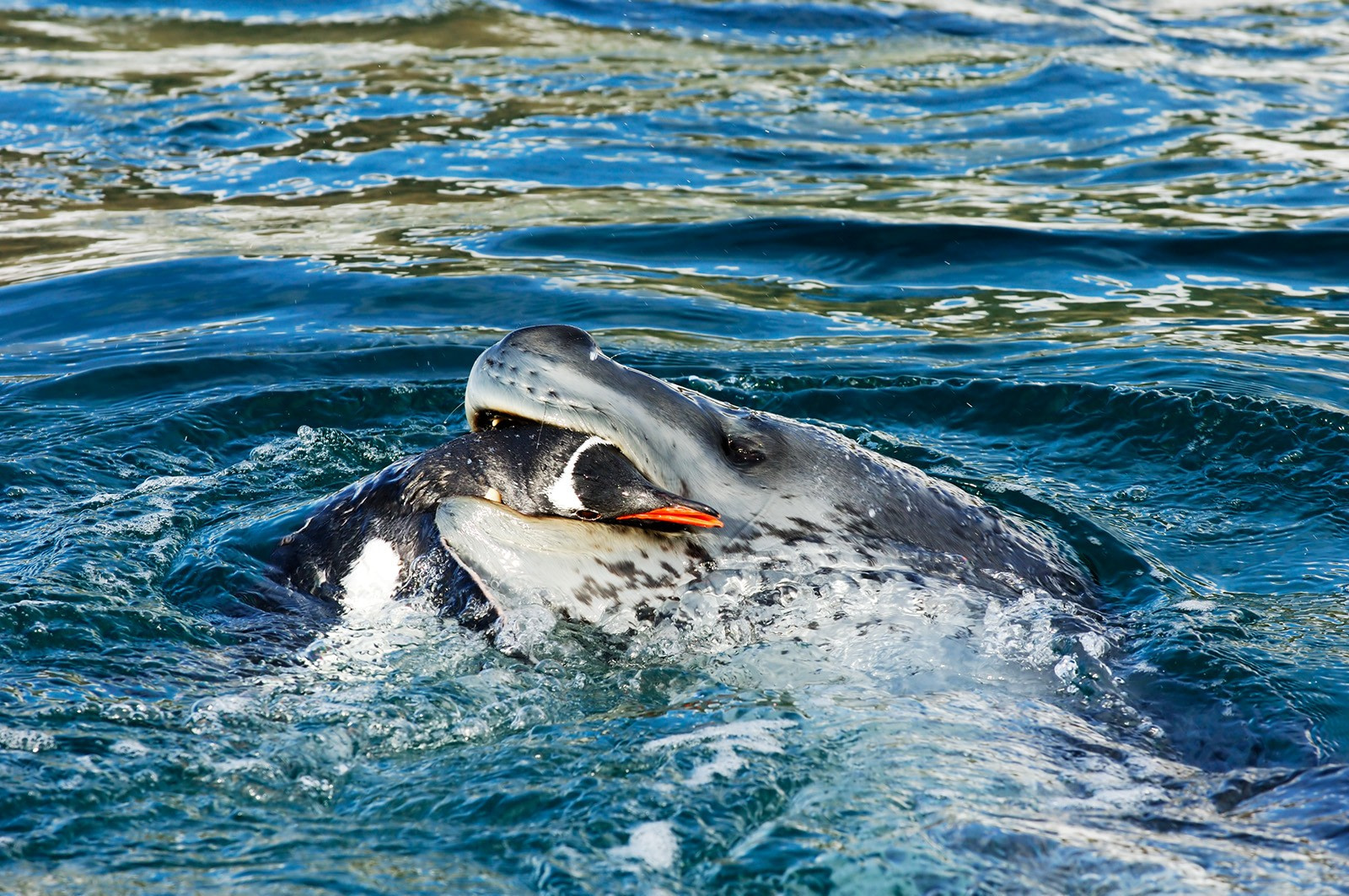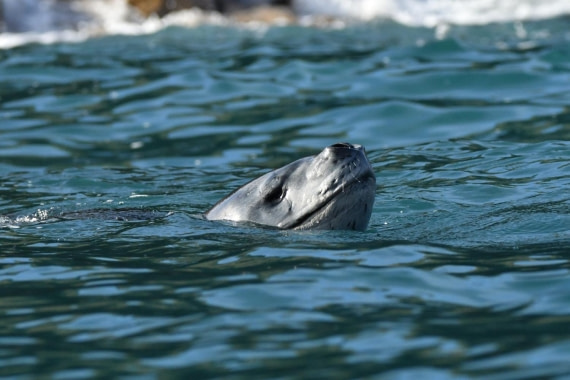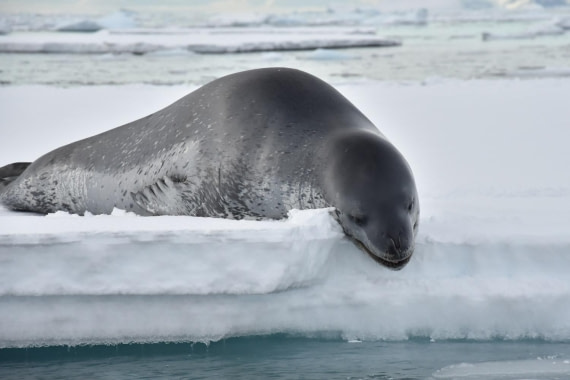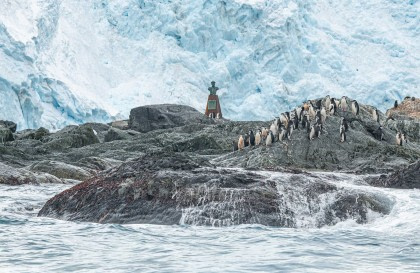Name: Leopard Seal, Sea Leopard (Hydrurga leptonyx)
Length: 2.5-3.5 metres
Weight: 200–600 kg
Location: The Antarctic plus southern hemisphere shorelines
Conservation status: Least Concern
Diet: Penguins, other species of seal, krill, squid, fish
Appearance: Mottled, dark grey on back, lighter on belly.
How do Leopard Seals hunt?
The diet of a particular Leopard Seal depends on its size. Smaller seals will depend more on krill, fish, squid, and penguins, while larger seals will attempt going after other members of the seal family. Leopard Seals hunt penguins by floating in waters near edges of ice or land where penguins have congregated. They then catch penguins in the water and thrash them around much like a dog catching prey. Leopard Seals have a special arrangement in their jaws. They have large canines designed to latch onto prey, but their back molars lock together in such a fashion that they can strain krill from water, somewhat in the same manner that baleen whales sieve krill.

Do Leopard Seals socialize?
Leopard Seals are generally solitary, grouping only during mating season.

How fast can Leopard Seals go?
Leopard Seals can swim at speeds reaching 37 km per hour. This is fast enough for them to launch themselves up onto land.
What are Leopard Seal mating rituals like?
Males sexually mature at 3 years of age, females at 2 years. During mating season, the females and males make long-distance mating calls to each other. Pregnancy lasts about 10 months, the birth occurring during the Antarctic summer. A pregnant female digs a hole-like den in the ice, a process which can take months, and then gives birth to a single pup. The pup will be about 1 metre long and weigh up to 32 kg, doubling their size within 3 months. The mother will nurse the pup for about a month. Males are rarely seen near the birthing grounds.
How long do Leopard Seals live?
Leopard Seals live about 25 years on average.

How many Leopard Seals are there today?
A 1977 estimate put their population at approximately 222,000.
Do Leopard Seals have any predators?
Leopard Seals are the 2nd-highest in the Antarctic food chain, fearing only the Killer Whale.
Do Leopard Seals attack people?
Leopard Seals are an aggressive breed, though there are few records of attacks on humans. However in 2003 a Leopard Seal dragged a British biologist, Kirsty Brown, underwater to her death. In contrast to this, a story of National Geographic photographer Paul Nicklen went viral when instead of attacking him, a Leopard Seal female repeatedly brought him live penguins in an effort to try to teach him how to hunt.
7 Stupendous Leopard Seal Facts
- Leopard Seals got their common name from their collection of black Leopard-like spots.
- Hydrurga leptonyx means “slender-clawed water-worker.”
- There’s still a lot to learn about Leopard Seals, like specifics of their mating habits. They’re somewhat difficult to study in the wild because of their dispersion and the fact that they live a great deal of their lives underwater.
- Leopard Seals are the largest of the Antarctic seals.
- Leopard Seals are picky eaters when it comes to penguins and will leave the skeleton, feet, and head behind.
- Leopard Seals are known to attack the black rubber pontoons of inflatable boats, forcing the boat owners to reinforce the rubber with protective plating, or vacate the premises to avoid damage.
- Leopard Seals are the only member of the seal family that consume other types of seal on a regular basis.
















